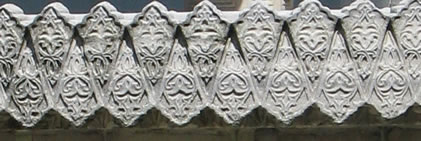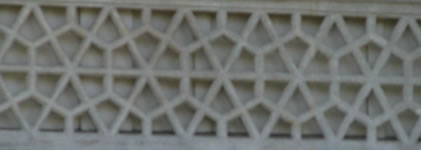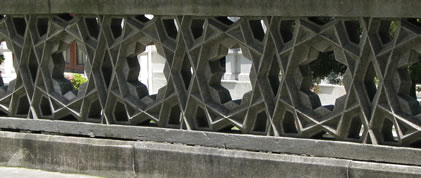Skip over navigation
These images are taken from the Topkapi Palace in Istanbul, Turkey. The Topkapi Palace was the official residence in the city of Istanbul of the Ottoman Sultans for 400 years from 1465 to 1853.
Can you work out the basic unit that makes up each pattern?
Can you continue the pattern?
Can you see any similarities and differences in the designs?






Or search by topic
Number and algebra
Geometry and measure
Probability and statistics
Working mathematically
Advanced mathematics
For younger learners
Topkapi Palace
Age 7 to 14
Challenge Level 





These images are taken from the Topkapi Palace in Istanbul, Turkey. The Topkapi Palace was the official residence in the city of Istanbul of the Ottoman Sultans for 400 years from 1465 to 1853.
Can you work out the basic unit that makes up each pattern?
Can you continue the pattern?
Can you see any similarities and differences in the designs?





You may also like
Rhombicubocts
Each of these solids is made up with 3 squares and a triangle around each vertex. Each has a total of 18 square faces and 8 faces that are equilateral triangles. How many faces, edges and vertices does each solid have?

